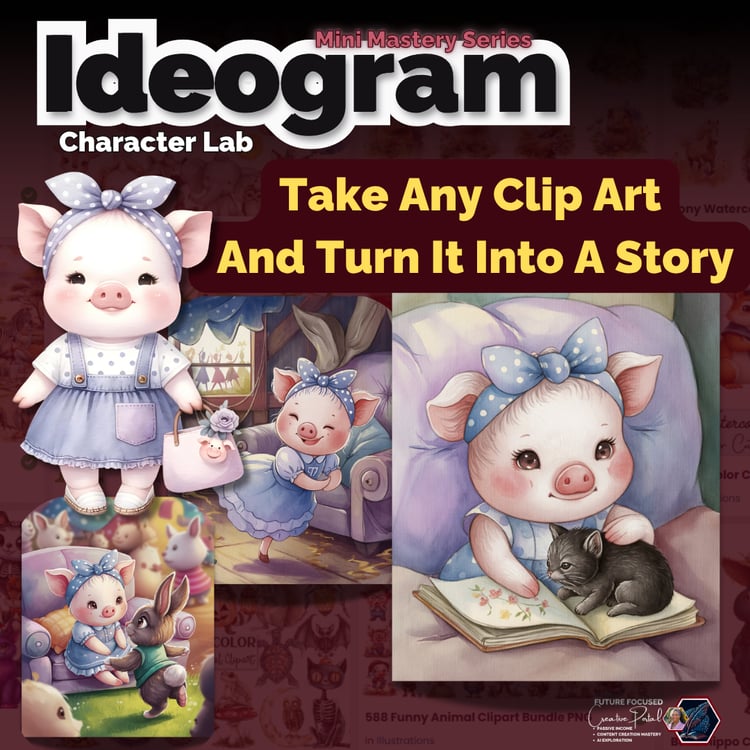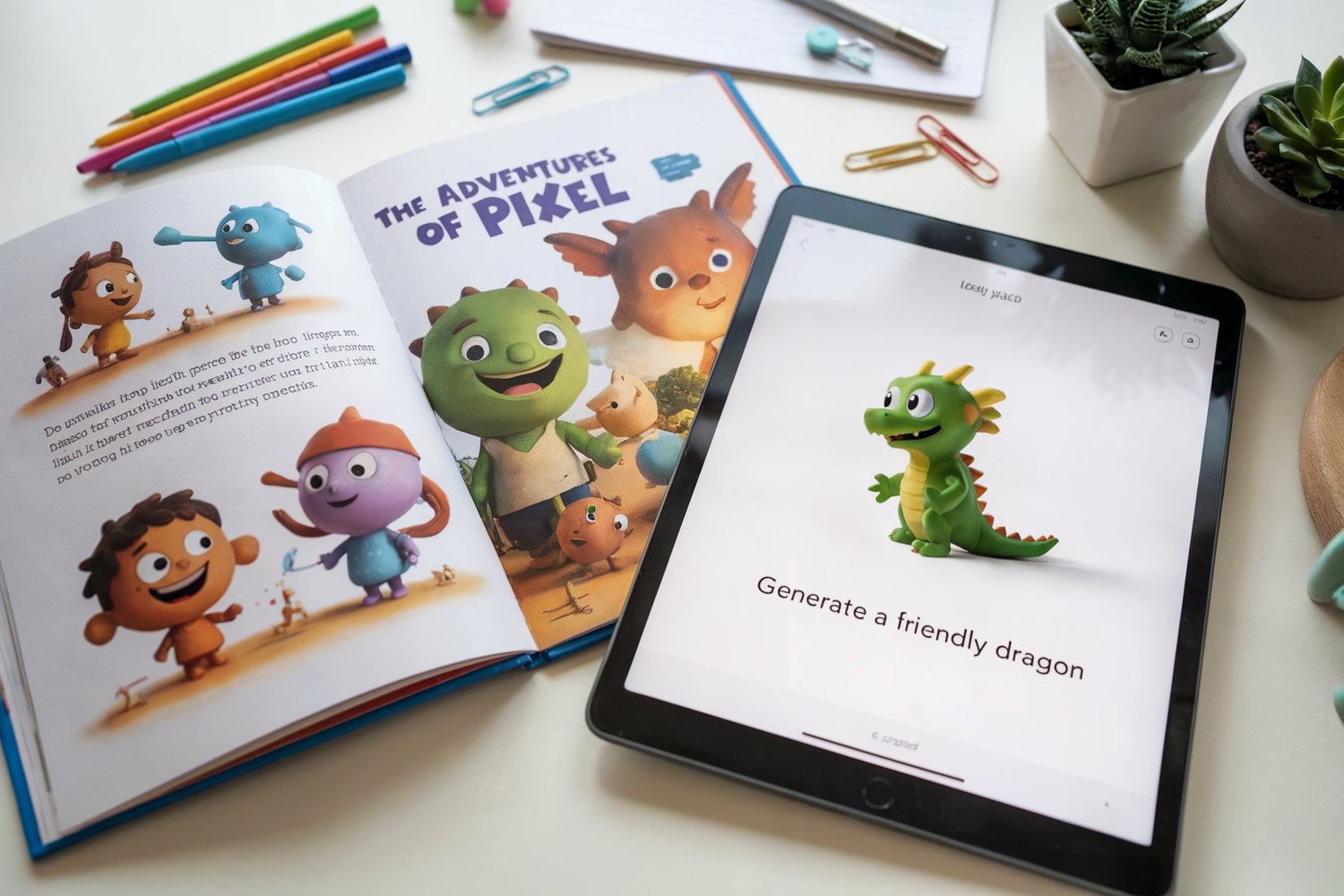Why your AI-generated characters keep changing — and how to use Ideogram’s Character Module to create consistent storybook art from start to finish.
Why AI Children's Books Often Fall Apart Visually
AI art has opened the door to self-publishing in a big way. With tools like MidJourney, Ideogram, and AI story generators, anyone can bring a story idea to life visually in minutes.
But many creators hit the same wall: inconsistent characters.
You start generating images for your children’s book, and suddenly:
- Your main character’s hairstyle shifts from page to page
- Their outfit changes without explanation
- The style drifts enough that it feels like a different illustrator took over midway
What began as a unified vision turns into something disjointed. For children’s books — where repetition, recognition, and emotional continuity matter — that’s a serious problem.
What Causes Character Inconsistency in AI Tools?
The short answer: AI is prompt-based, not memory-based.
Each image generation is treated as a new, isolated request. Unless your prompt is extremely refined and specific, your character will naturally “drift.”
Workarounds like seed codes, cloning, or detailed prompt engineering help — but they require trial and error, and even then, consistency across multiple poses and scenes is tough.
Ideogram's Character Module: A Step Forward
Ideogram recently introduced a feature that many visual creators have been waiting for — a Character Module that allows you to “lock” a character design and apply it across multiple generations.
With it, you can:
- Maintain the same character across multiple poses and scenes
- Create consistent variations of the same character (e.g., happy, sad, running, jumping)
- Eliminate the guesswork that comes from trying to reverse-engineer prompts every time
This solves a major gap for people creating visual-first products like:
- Children’s books
- Story-based printables
- Coloring books with recurring figures
- Short-form video sequences using image narration
My Workflow for Solving the Consistency Problem
After testing this across several book projects, I built a repeatable system using Ideogram’s new tools. It blends:
- Prompt construction that “anchors” visual elements
- Ideogram’s locked character settings
- AI story tools that layer structure over the visuals
- A few templates for coloring page extraction and layout
This method allows me to go from a character sketch → to full book illustrations → to companion products like coloring pages — all while keeping the look consistent.
I’ve packaged the entire system into a short-format course called Ideogram Character Lab, which is part of my Mini Mastery Series. If you’re building books, printables, or faceless videos and want a workflow that holds together visually, it’s available here.
For Visual Storytelling, Consistency = Trust
Readers — especially children — develop emotional relationships with characters. When a character’s appearance changes unexpectedly, it breaks that connection. It becomes harder to suspend disbelief or stay engaged with the narrative.
That’s why consistent character design isn’t just a visual preference. It’s a storytelling necessity.
And for creators using AI, it’s now possible to achieve — without spending hours fixing things manually.
What to Try Next
If you’re already using Ideogram, test the Character Module with one of your existing prompt styles. See how well it maintains the “feel” of your character across poses. If you’ve been frustrated with past results, this might be the missing piece.

And if you want a guided approach — with prompts, templates, and examples — the Ideogram Character Lab lays it out clearly.



Comments ()